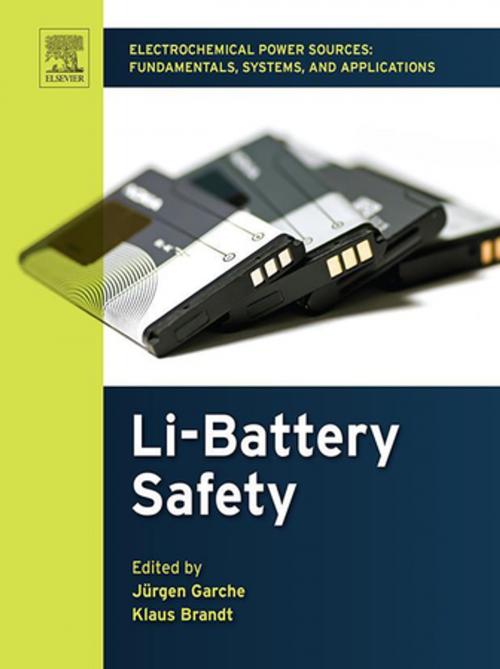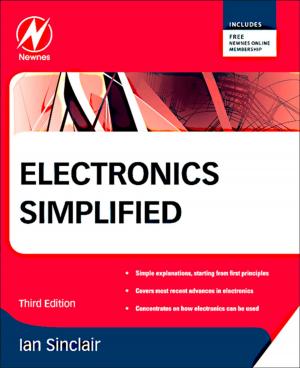Electrochemical Power Sources: Fundamentals, Systems, and Applications
Li-Battery Safety
Nonfiction, Science & Nature, Technology, Engineering, Chemical & Biochemical| Author: | ISBN: | 9780444640086 | |
| Publisher: | Elsevier Science | Publication: | September 20, 2018 |
| Imprint: | Elsevier | Language: | English |
| Author: | |
| ISBN: | 9780444640086 |
| Publisher: | Elsevier Science |
| Publication: | September 20, 2018 |
| Imprint: | Elsevier |
| Language: | English |
Safety of Lithium Batteries describes how best to assure safety during all phases of the life of Lithium ion batteries (production, transport, use, and disposal). About 5 billion Li-ion cells are produced each year, predominantly for use in consumer electronics. This book describes how the high-energy density and outstanding performance of Li-ion batteries will result in a large increase in the production of Li-ion cells for electric drive train vehicle (xEV) and battery energy storage (BES or EES) purposes. The high-energy density of Li battery systems comes with special hazards related to the materials employed in these systems.
The manufacturers of cells and batteries have strongly reduced the hazard probability by a number of measures. However, absolute safety of the Li system is not given as multiple incidents in consumer electronics have shown.
- Presents the relationship between chemical and structure material properties and cell safety
- Relates cell and battery design to safety as well as system operation parameters to safety
- Outlines the influences of abuses on safety and the relationship to battery testing
- Explores the limitations for transport and storage of cells and batteries
- Includes recycling, disposal and second use of lithium ion batteries
Safety of Lithium Batteries describes how best to assure safety during all phases of the life of Lithium ion batteries (production, transport, use, and disposal). About 5 billion Li-ion cells are produced each year, predominantly for use in consumer electronics. This book describes how the high-energy density and outstanding performance of Li-ion batteries will result in a large increase in the production of Li-ion cells for electric drive train vehicle (xEV) and battery energy storage (BES or EES) purposes. The high-energy density of Li battery systems comes with special hazards related to the materials employed in these systems.
The manufacturers of cells and batteries have strongly reduced the hazard probability by a number of measures. However, absolute safety of the Li system is not given as multiple incidents in consumer electronics have shown.
- Presents the relationship between chemical and structure material properties and cell safety
- Relates cell and battery design to safety as well as system operation parameters to safety
- Outlines the influences of abuses on safety and the relationship to battery testing
- Explores the limitations for transport and storage of cells and batteries
- Includes recycling, disposal and second use of lithium ion batteries















